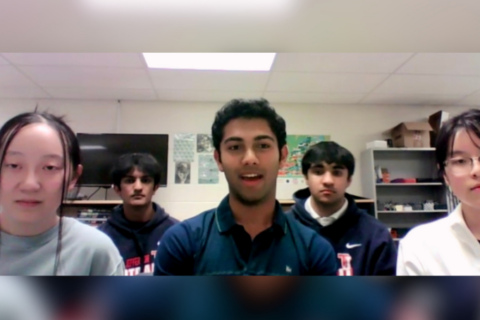An increasing number of Fairfax County Public School students are missing 10% or more of the school year, following national trends that depict a rise in chronic absenteeism.
At Thursday night’s school board meeting, Superintendent Michelle Reid said Virginia’s largest school system is closely monitoring its absenteeism data. In 2021, 5.1% of students were chronically absent. In 2022, 15.3% of students were chronically absent, a figure that went up to 17.1% in 2023.
However, Fairfax County’s absenteeism numbers are lower than Virginia’s statewide averages, Reid said.
Before the pandemic, the school district’s chronic absenteeism rate was consistently below 10%, Reid said. But student absences spiked after the return to in-person schooling, and Reid attributes some of the increase to actual illness and coronavirus-related quarantines the last few years.
Also contributing, Reid said, is “getting back together (in school) and sharing new and unique opportunities for getting sick.”
Chronic absenteeism, defined as missing 10% or more of a school year for any reason, is on the rise across other D.C.-area school systems, too. School leaders say students attending class every day is essential in helping them catch up in the aftermath of the pandemic, and remain on track.
“I don’t think we can overstate to our families how much this needs to be paid attention to,” school board member Ricardy Anderson said Thursday.
The county, Reid said, is planning to use a multitiered approach to improve attendance. Some of that will include encouraging attendance for all students and creating individualized learning and success plans for students who need the most intensive level of intervention.
The consequences of missing class are significant, Reid said, pointing to data that indicates students who aren’t reading on grade level by the end of third grade are four times more likely to drop out of high school.
Students in early grades, Reid said, “are particularly susceptible to falling behind in fundamental reading skills, and again, that has a snowball effect as children move through those elementary years.”
“It’s frankly a national crisis,” Board member Karen Corbett Sanders said of absenteeism. “We know that our kids that are not attending school are not attending it for a whole series of different reasons, from food insecurity to something’s happening with their family or child care, or missing a bus. It’s really a tough situation because you actually have to unpack each individual.”
Currently, there are 4,000 students in the county who meet the chronic absenteeism threshold, Reid said, adding that many kids missed time during the first month of school “because students often become sick as we all gather back together in the fall.”
Last year, some of the school system’s responses to absenteeism included doing “double-back bus routes and transportation solutions for students who missed an early bus,” Reid said.
Board member Megan McLaughlin said absenteeism is a complicated issue that varies based on individual circumstances.
“This is one of the most crucial ways in which we really do ensure our students stay in school and have an opportunity to succeed,” McLaughlin said.








